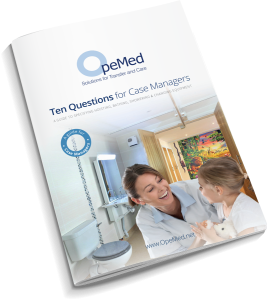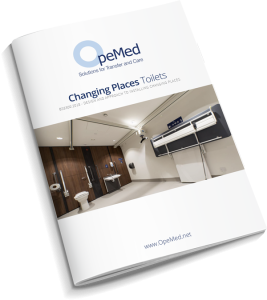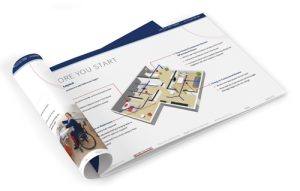Best Practice Guides
OpeMed Case Manager and Occupational Therapists Guide
Ten Questions for Case Manages – When Specifying Hoisting, Bathing and Changing Equipment
When faced with such a diverse range of equipment from many suppliers, working out what is best for your client can be a challenge. Using our latest guide will help you work through the mine-field that can be transfer and care equipment.
We understand that there can be many complexities in each case and client, so to help break down the world of transfer and care we have put together a supporting document asking the questions you need when Specifying Hoisting, Bathing and Changing equipment.
One Occupational Therapist said:
“As a newly qualified OT (just this week) this guide with prove invaluable for myself to refer to when looking at this specific area!”

Changing Places Toilet Guide Download
Changing Places Toilets – Design and Approach to Installing Changing Places
As Co-Sponsors of the Changing Places campaign, we amalgamated the new BS8300 recommendations with the Changing Places Guide and our knowledge as suppliers and installers to create a new ‘Design and Approach to Installing Changing Places’ Guide.
Our new guide seeks to clarify the updated Standard, in order for those building or campaigning for Changing Places to glean as much crucial information from these necessary guidelines as possible, with minimal effort. The comprehensive and handy guide offers a clear overview, explaining the campaign and its importance for those who have just been introduced to Changing Places.

The OpeMed Guide for Architects
The OpeMed Best Practice Guide for Specialist Architect Projects
Projects for residential properties such as care homes, hospitals and long term care facilities, involving the installation of disability equipment, can be fraught with unnecessary complications and time delays if they aren’t planned and designed correctly from the start.
To understand what architects require and would find useful when considering a project that involves specialist equipment, we recently sent out a survey to over 300 architects. The results highlighted that for architects, ensuring disability equipment provides optimum accessibility and ease of use is the main objective for specialist projects. I was also surprised to find that 100% of respondents found it difficult to understand the user requirements during their specialist projects in the past and would find a guide for these projects incredibly valuable.
Therefore, we have put together an architect’s guide for specialist projects that gives advice and information on every aspect from the planning stages through to design and delivery. It includes information on understanding user requirements, the best room layouts, through to advice on the products available.

Benefits of Ceiling Hoists for Gait Training
Benefits of Ceiling Hoists for Gait Training
A Ceiling Hoist is a multi-purpose tool that really pulls its weight, not only providing the means for transfers for patients from bed to chair or bed to bathroom for example, but also assisting in their rehabilitation and physiotherapy through gait training.
The new Quick Guide outlines the benefits that Ceiling Hoists can offer in a physiotherapy environment under a few choice and key sub-headings that summarise how Ceiling Hoists can enhance how gait and ambulation training is conducted for patients and how this can improve their response, their safety and that of the physiotherapists.
It also covers the ways in which Ceiling Hoists can be and have been used specifically in these environments to best suit the needs of those undergoing physio treatment; XY Systems for full room coverage, large loops for continuous ambulation around a room or a straight track above a set of parallel bars.

